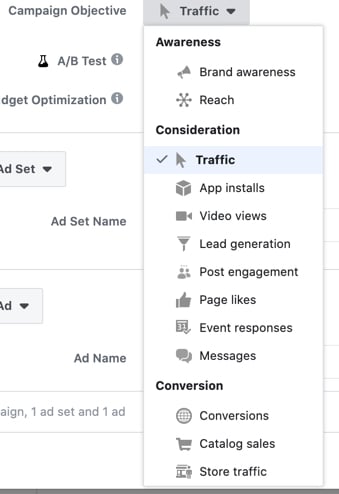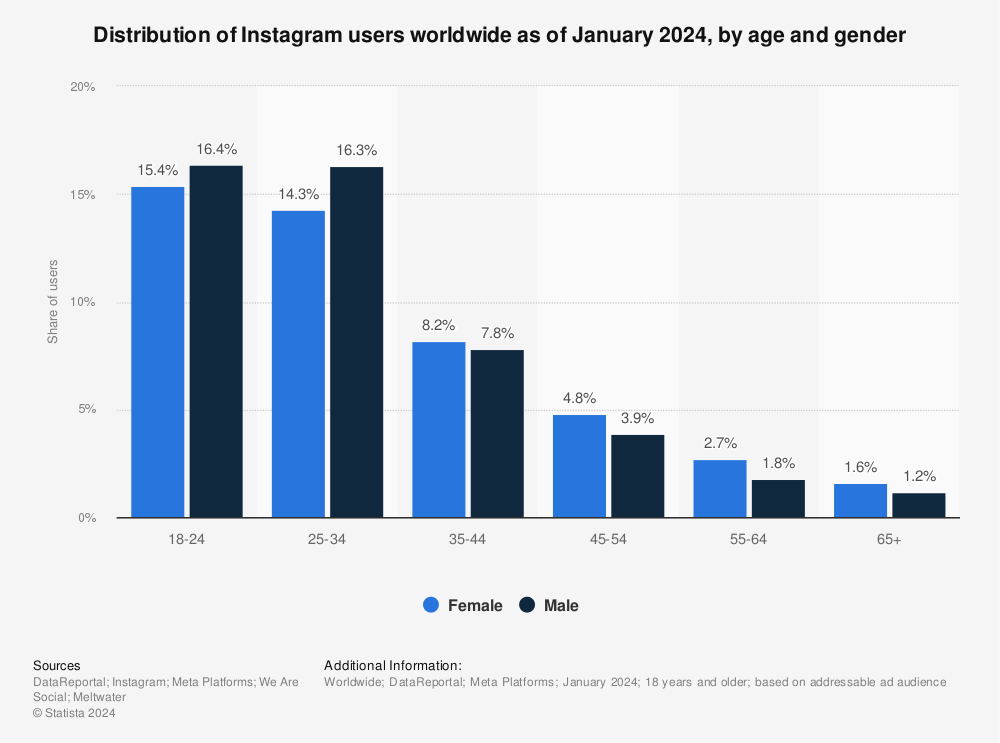Too often, Instagram is a box that we check when we run Facebook ads.
The reality is, they are becoming their own entity more and more every year.
While certain factors driving Instagram costs are similar to Facebook, it’s time to start evaluating them on their own merits. They are more than part of the Jell-O blob of placements that make up what we think of as Facebook Ads.
The very thing that drives their costs can also shed light on what those differences are.
What Drives Prices for Instagram Ads?
#1 Your Objective
The first thing to consider is what objective you’re choosing when you first set up your campaign. Your cost is impacted by which objective you choose.

If you choose conversions, and particularly if you’re picking something like purchase or something very far down the funnel, this is going to make your cost be exponentially more.
Why?
There are two big reasons for this:
- The first is you are going after an audience that is not the majority of your larger target. The odds that you’ll find someone that’s in your target and convert quickly are slimmer because it’s a taller order.
- Keep in mind that any objective where you are looking to take the user off of the platform is usually going to carry higher cost. This happens for two reasons: a lot of users don’t wanna leave the platform and Facebook and Instagram don’t want users to leave, either!
Facebook reports to shareholders, and time spent on the site is an important metric. They want that engagement time to be long – leaving to go to your site can interfere with this.
The flip side to that is any objective that involves keeping them on the platform is probably going to work to your advantage. Objectives like Lead Ads, Engagement and Video Views carry lower costs since they are easier actions to achieve.
#2 Your Targeting
Another driving factor of cost is who you’re targeting, and what your competition is doing.
Going after a die-hard fan audience with high spending power is going to be rich with competition.
Going after broader audiences where you’re letting Facebook show your ads to people most likely to do your objective is likely to give you lower costs.
Things like lookalike targets versus interest targets will fit into your cost, but just keep in mind that the more data Instagram has, the better it’s going to do it optimizing which ultimately is going to bring your costs down.
Running remarketing audiences, too? Those will vary in cost as well, usually based on the audience size.
#3: Your Creative
This may be predetermined by the campaign type you chose (for example, if you chose video views you’ll be running video).
Aside from those instances, you’re going to get more favorable costs on certain types.
You might find in some instances video is cheaper and in others, static images are cheaper. Cost is a relative thing, because it’s combined with numbers 1 and 2 above.
So for example the CPM might be cheaper for static ad versus a video on Instagram.
But, if your goal is sales, and they aren’t as good, they’re actually costing you more based on your objective.
If it’s a favorable CPM for a video versus a static image, but the objective is to sell something and it isn’t…then the cost doesn’t really make a whole lot of difference.
#4: Where the Ad is Shown
Another thing that’s become a bigger thing to keep in mind with Instagram is where your ad shows. The first is, you’ll likely notice differences in performance between Facebook and Instagram.

When Instagram started, really all there was was a feed. It was pretty straightforward.
Now there’s Instagram Explore as a placement. There’s also the Instagram Stories placement. No doubt, soon there will be focus on one for Reels.
Instagram Stories are a completely different beast when it comes to cost and creative, which I’ve written about extensively.
When you’re looking at your aggregate and Instagram performance this is one of the most important places you can look.
Here’s the same campaign you saw above, but broken out into the different placements. Notice how the costs are different, which impacts the ROAS for this ecommerce retailer:

Something to pay attention to when you ask, “What are my Instagram ads costing?” is while Feeds and Stories are both Instagram, they’re very different user experiences.
The more appropriate question could be: “What are my Instagram costs based on where the ad shows?”
It’s important that you understand the difference in both.
#5: Instagram’s Demographics
Another thing to keep in mind are the demographics on Instagram.
 <
<
When you look at something like supply and demand, the quantity of an audience in a certain demographic will vary among platforms.
If you’re trying to reach a much older demographic, they’re not on Instagram as much.
This can mean one of two things: reaching them there could mean higher competition (see #2 above), or it could mean they’re less targeted and therefore cheaper.
If you’re going for a younger demographic, you’re gonna have a much larger audience, but also more competition. This will also affect your ad costs, and can really go either way.
Here’s an example of a cheaper older demo (note the low sales volume) versus the younger demo. The optimization algorithm works in the advertiser’s favor here. The older demographic has a better return, but there’s a lot less volume. The younger demo is less expensive because there are more of them, and easier to find purchasers:

So, That’s Your Summary of Instagram Costs!
Instagram ad costs are driven by many of the same factors that drive Facebook’s overall environment. That doesn’t mean that they should be treated the same way, though!
Don’t forget to:
- Consider your target audience on Facebook vs. Instagram.
- Test different audience targets.
- Be ready to test different creative that you may not have for Facebook.
- Remember to maximize the creative options you have within Instagram Stories.

